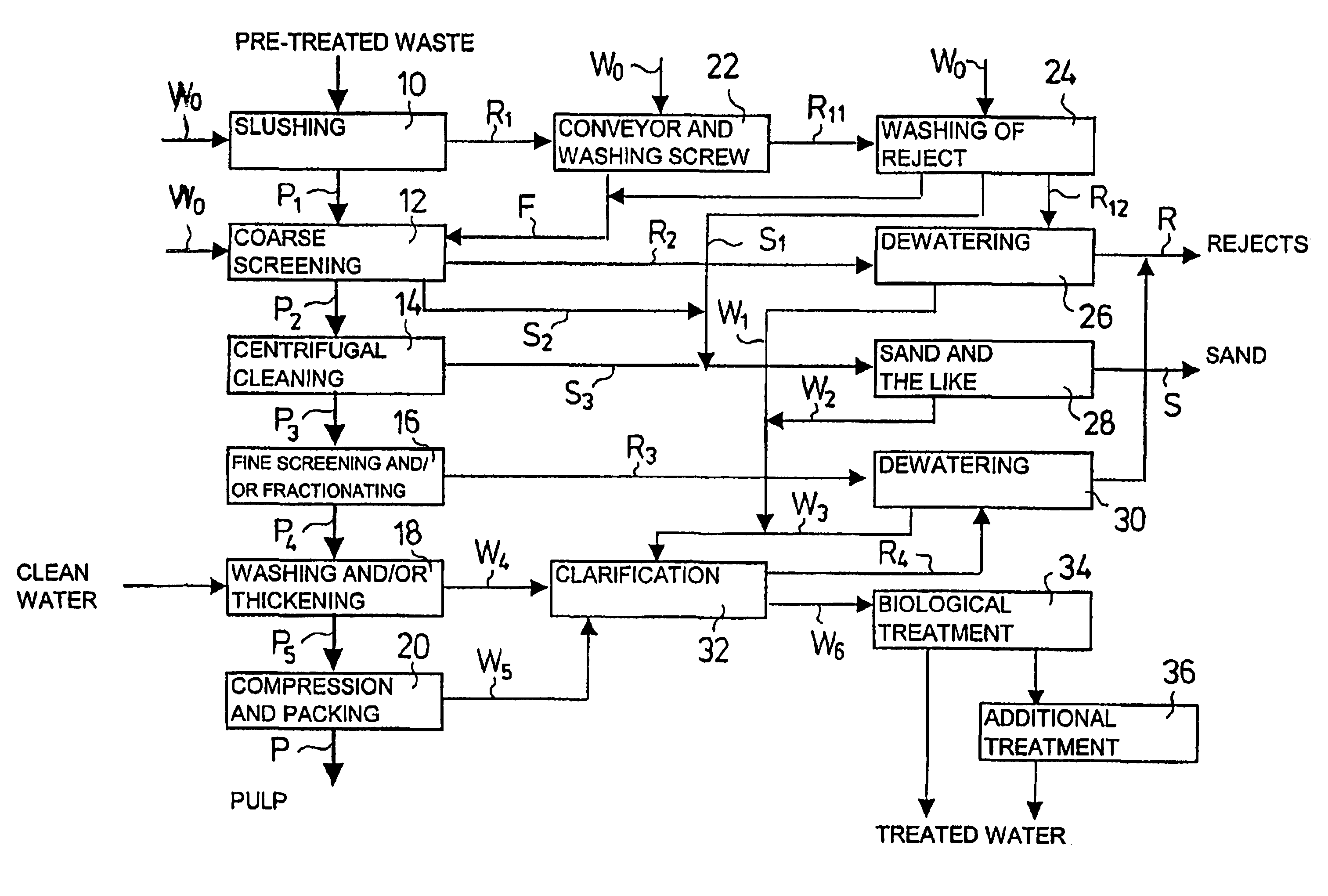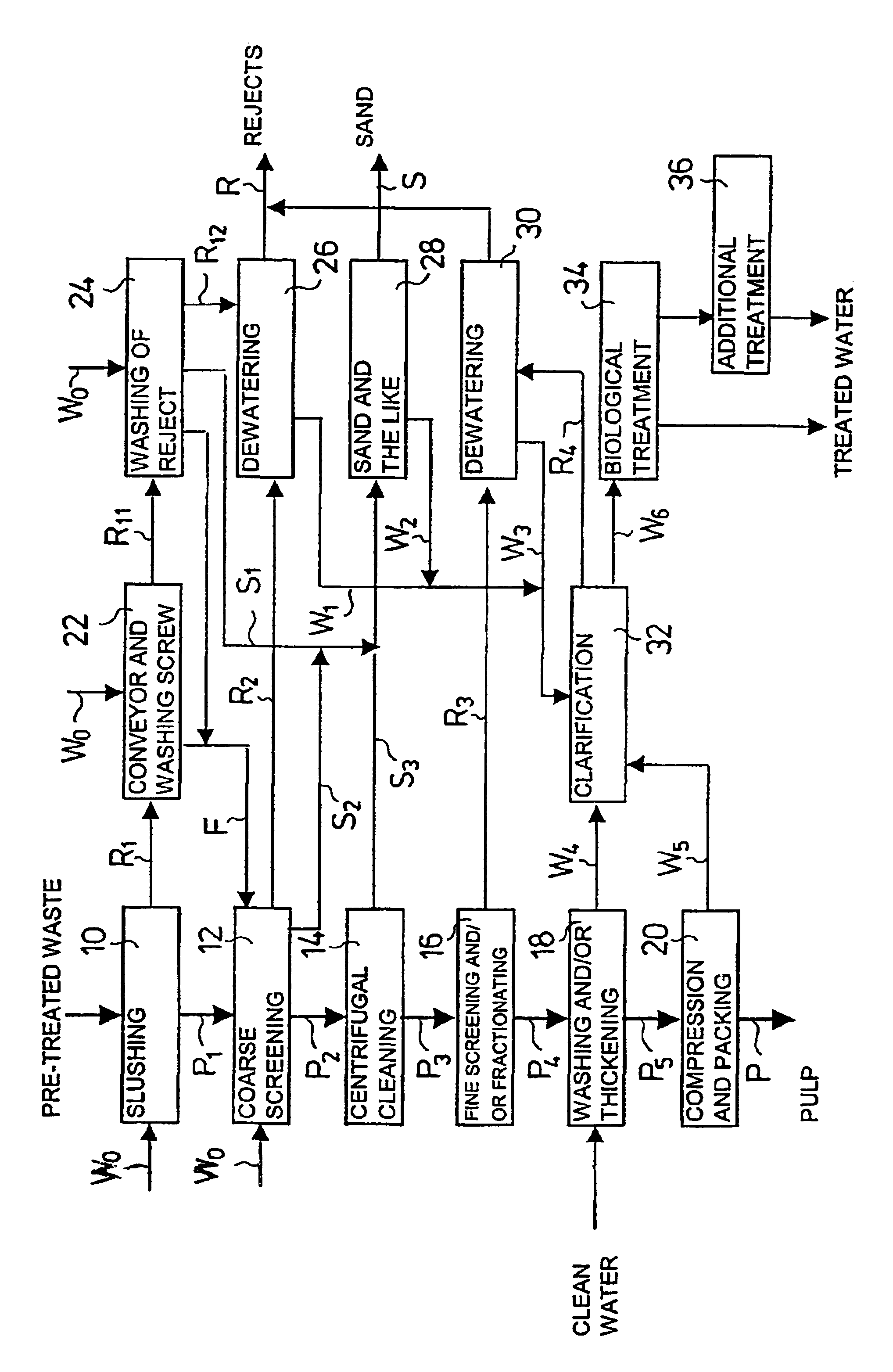Method and system for utilizing waste
a waste and waste technology, applied in the field of waste methods and systems, can solve the problems of insufficient conventional arrangement for removing rejects and relatively high rejects, and achieve the effects of improving the quality of fibre material, maximizing the yield of fibres, and fine screening
- Summary
- Abstract
- Description
- Claims
- Application Information
AI Technical Summary
Benefits of technology
Problems solved by technology
Method used
Image
Examples
Embodiment Construction
[0021]Pre-treated waste is passed to a fibre separation process, which waste has been crushed and screened and from which non-combustible and undesirable fractions, such as metal, glass, stones, biowaste, etc. have been removed. The waste material is slushed in a continuous-operation high-consistency pulper 10, advantageously at a temperature of about 60° C. A material stream P1 containing fibres suspended in water and a material stream R1 containing non-defibrable waste are discharged substantially continuously from the pulper 10. A screw conveyor 22 moves the reject fraction R1 from the pulper 10 into a combined washing and drying drum 24 of the reject. The reject is washed by means of circulation water W0 both on the screw conveyor 22 and in the washing drum 24, and fibre-containing washing waters F are returned to be mixed with the fibre suspension P1.
[0022]The fibre fraction P1 taken out of the pulper 10 through a screen plate is passed to coarse screening 12, in which coarse i...
PUM
| Property | Measurement | Unit |
|---|---|---|
| temperature | aaaaa | aaaaa |
| diameter | aaaaa | aaaaa |
| diameter | aaaaa | aaaaa |
Abstract
Description
Claims
Application Information
 Login to View More
Login to View More - R&D
- Intellectual Property
- Life Sciences
- Materials
- Tech Scout
- Unparalleled Data Quality
- Higher Quality Content
- 60% Fewer Hallucinations
Browse by: Latest US Patents, China's latest patents, Technical Efficacy Thesaurus, Application Domain, Technology Topic, Popular Technical Reports.
© 2025 PatSnap. All rights reserved.Legal|Privacy policy|Modern Slavery Act Transparency Statement|Sitemap|About US| Contact US: help@patsnap.com


